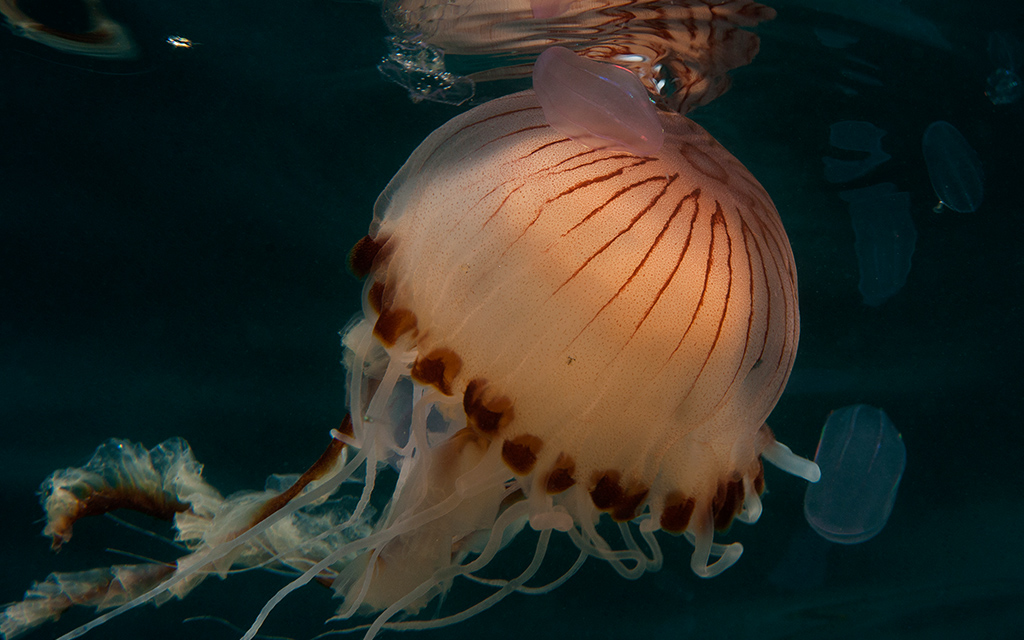
This year, we have seen a rise in news articles about the risk of sunburn whilst snorkelling worldwide, and the plethora of jellyfish around parts of the British coast.
In late July, this article was published (graphic images within) regarding an incident in Cuba where a snorkeller burned her back while snorkelling for just one hour while wearing suncream. Although the incident happened in Cuba, our recent very hot weather in this country should make us think carefully about protection from the sun and limiting exposure time.
In May, an article on jellyfish appeared and following on from this there have been several articles reporting the presence of many jellyfish from the South Coast to Scotland. Do you know the different types of jellyfish found around the British coast and the action to take should you be stung?
Marg Baldwin
Snorkel Instructor Trainer
Sun Protection
Remember the advice given in our Snorkel Diver Training programme:
- Water may be cool but lying on the surface of the water for some time in strong sunshine, even though you feel mostly submerged, can result in getting burnt on the back of the head, neck, shoulders and back of legs.
- To prevent sunburn, wear a wetsuit or skin suit or a t-shirt, and protect the head and neck with a hat (which you will probably need to pass to your buddy when doing surface dives!)
- Use waterproof sunscreens.
Remember to apply sunscreens (preferable at least Sun Protection Factor (SPF) 30 liberally no less than 30 minutes before going into the sun; ‘waterproof’ sunscreens need to be reapplied after about 40 minutes in water and most definitely after towel drying your skin. Do use sunscreens that are designated ‘reef-friendly’. The chemicals in some sunscreens may be causing coral bleaching.
Jellyfish
The main six types of jellyfish found in British waters are:
- Moon jellyfish (UK-wide)
- Compass jellyfish (mainly in the south)
- Blue jellyfish (common in South West and Wales)
- Lion’s mane jellyfish (North Wales, North Scotland)
- Barrel jellyfish (South West, Ireland, Wales, West Scotland)
- Mauve stinger (rare but can be found along the south coast)
We should be making full use of the many marine identification books and other aids available to us to make sure we know what we are seeing.
Should you get stung, the NHS advises:
- Rinse the area that was stung with seawater. Don’t use fresh water, as this will make the sting worse.
- If you can see the stinging spines from the jellyfish on your skin, carefully scrape them off. You could use the edge of a bank card or tweezers.
- Heat will help the sting, so you can soak the area in very warm water (as hot as can be tolerated) or you can use hot flannels or towels.
- Over the counter painkillers like paracetamol or ibuprofen will help ease the pain as well.
Think SAFE – Dive SAFE
Jim Watson
BSAC Safety and Development Manager
Find out more about snorkel training.

 Author: Marg Baldwin | Posted 22 Aug 2019
Author: Marg Baldwin | Posted 22 Aug 2019


